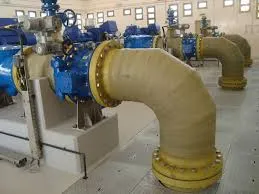
-
 Afrikaans
Afrikaans -
 Albanian
Albanian -
 Amharic
Amharic -
 Arabic
Arabic -
 Armenian
Armenian -
 Azerbaijani
Azerbaijani -
 Basque
Basque -
 Belarusian
Belarusian -
 Bengali
Bengali -
 Bosnian
Bosnian -
 Bulgarian
Bulgarian -
 Catalan
Catalan -
 Cebuano
Cebuano -
 China
China -
 China (Taiwan)
China (Taiwan) -
 Corsican
Corsican -
 Croatian
Croatian -
 Czech
Czech -
 Danish
Danish -
 Dutch
Dutch -
 English
English -
 Esperanto
Esperanto -
 Estonian
Estonian -
 Finnish
Finnish -
 French
French -
 Frisian
Frisian -
 Galician
Galician -
 Georgian
Georgian -
 German
German -
 Greek
Greek -
 Gujarati
Gujarati -
 Haitian Creole
Haitian Creole -
 hausa
hausa -
 hawaiian
hawaiian -
 Hebrew
Hebrew -
 Hindi
Hindi -
 Miao
Miao -
 Hungarian
Hungarian -
 Icelandic
Icelandic -
 igbo
igbo -
 Indonesian
Indonesian -
 irish
irish -
 Italian
Italian -
 Japanese
Japanese -
 Javanese
Javanese -
 Kannada
Kannada -
 kazakh
kazakh -
 Khmer
Khmer -
 Rwandese
Rwandese -
 Korean
Korean -
 Kurdish
Kurdish -
 Kyrgyz
Kyrgyz -
 Lao
Lao -
 Latin
Latin -
 Latvian
Latvian -
 Lithuanian
Lithuanian -
 Luxembourgish
Luxembourgish -
 Macedonian
Macedonian -
 Malgashi
Malgashi -
 Malay
Malay -
 Malayalam
Malayalam -
 Maltese
Maltese -
 Maori
Maori -
 Marathi
Marathi -
 Mongolian
Mongolian -
 Myanmar
Myanmar -
 Nepali
Nepali -
 Norwegian
Norwegian -
 Norwegian
Norwegian -
 Occitan
Occitan -
 Pashto
Pashto -
 Persian
Persian -
 Polish
Polish -
 Portuguese
Portuguese -
 Punjabi
Punjabi -
 Romanian
Romanian -
 Russian
Russian -
 Samoan
Samoan -
 Scottish Gaelic
Scottish Gaelic -
 Serbian
Serbian -
 Sesotho
Sesotho -
 Shona
Shona -
 Sindhi
Sindhi -
 Sinhala
Sinhala -
 Slovak
Slovak -
 Slovenian
Slovenian -
 Somali
Somali -
 Spanish
Spanish -
 Sundanese
Sundanese -
 Swahili
Swahili -
 Swedish
Swedish -
 Tagalog
Tagalog -
 Tajik
Tajik -
 Tamil
Tamil -
 Tatar
Tatar -
 Telugu
Telugu -
 Thai
Thai -
 Turkish
Turkish -
 Turkmen
Turkmen -
 Ukrainian
Ukrainian -
 Urdu
Urdu -
 Uighur
Uighur -
 Uzbek
Uzbek -
 Vietnamese
Vietnamese -
 Welsh
Welsh -
 Bantu
Bantu -
 Yiddish
Yiddish -
 Yoruba
Yoruba -
 Zulu
Zulu
frp sheet
Understanding FRP Sheets Applications and Advantages
Fiber Reinforced Polymer (FRP) sheets have emerged as a revolutionary material in construction and engineering due to their remarkable strength-to-weight ratio, durability, and resistance to various environmental factors. Composed of a polymer matrix reinforced with fibers—commonly glass, carbon, or aramid—FRP sheets are utilized in a wide array of applications, from infrastructure rehabilitation to aerospace and automotive industries.
Composition and Properties
The composition of FRP sheets is critical to their performance. The fibers provide the tensile strength, while the polymer matrix protects the fibers from environmental damage and adds flexibility. FRP sheets can be produced in a variety of thicknesses and sizes, making them adaptable to specific requirements. One of the most significant advantages of FRP is that it is lightweight compared to traditional materials such as steel or concrete. This quality not only facilitates easier handling and installation but also reduces the overall load on structures.
Moreover, FRP sheets exhibit excellent resistance to corrosion and chemicals. Unlike metals that are prone to rust and degradation over time, FRP materials maintain their structural integrity even when exposed to harsh environments, including moisture, salt, and industrial chemicals. This attribute makes FRP sheets particularly suitable for applications in marine environments, wastewater treatment plants, and chemical processing facilities.
Applications in Construction
In the field of construction, FRP sheets are used primarily for strengthening and repairing existing structures. For example, they can be applied to bridge beams, columns, and walls to enhance load-bearing capacity. This reinforcement is achieved through techniques such as external bonding, where the FRP sheets are affixed to the surface of a structural element. This method minimizes the need for cumbersome interventions and can often be completed with minimal downtime—a key advantage for infrastructure projects.
Another significant application of FRP sheets is in the retrofitting of aging structures. As many infrastructures worldwide face the combined challenges of aging and increased loads, FRP materials serve as an effective solution to extend their lifespan. By improving the flexural strength and stiffness of concrete, FRP sheets have been credited with preserving iconic structures, bridge systems, and high-rise buildings.
frp sheet

Aerospace and Automotive Industries
Beyond construction, FRP sheets play a pivotal role in the aerospace and automotive sectors. For example, in aviation, the lightweight nature of FRP allows for improved fuel efficiency and reduced emissions, making aircrafts more environmentally friendly. The material's high strength enables the design of structures such as wing components and fuselages that withstand significant stress while remaining lightweight.
Similarly, in the automotive industry, FRP sheets are increasingly used in the manufacturing of car parts. Components like bumpers, hoods, and panels made from FRP are not only lighter but also offer better design flexibility compared to traditional materials. This innovation leads to enhanced performance and increased overall efficiency of vehicles.
Environmental Impact and Sustainability
FRP sheets are also being recognized for their potential sustainability advantages. As the world increasingly emphasizes the importance of sustainable materials and practices, the use of FRP can contribute to reduction in material consumption and waste. Their longevity and durability mean that structures reinforced with FRP sheets often require less frequent repairs and replacements, thereby conserving resources.
Furthermore, advances in recycling technologies are paving the way for end-of-life opportunities for FRP materials. Researchers are exploring various methods to repurpose or recycle FRP composites, which could mitigate the environmental impacts traditionally associated with non-degradable plastics.
Conclusion
In conclusion, FRP sheets represent a significant innovation in materials science, offering unprecedented advantages across various industries. Their remarkable strength, resistance to corrosion, and lightweight nature make them an ideal choice for construction, aerospace, and automotive applications. As research and technology continue to evolve, the potential uses of FRP sheets are expected to expand, further solidifying their role as a cornerstone of modern engineering solutions. As we move towards a future that prioritizes sustainability, the adaptability of FRP materials will undoubtedly play a crucial role in shaping resilient infrastructure for generations to come.









